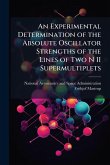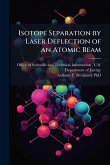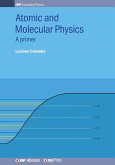The absorption of vacuum ultraviolet light by atomic oxygen has been measured in the Electric Arc-driven Shock Tube (EAST) Facility at NASA-Ames Research Center. This investigation demonstrates the instrumentation required to determine atomic oxygen concentrations from absorption measurements in impulse facilities. A shock wave dissociates molecular oxygen, producing a high temperature sample of atomic oxygen in the shock tube. A probe beam is generated with a Raman-shifted ArF excimer laser. By suitable tuning of the laser, absorption is measured over a range of wavelengths in the region of the atomic line at 130.49 nm. The line shape function is determined from measurements at atomic oxygen densities of 3x10(exp 17) and 9x10(exp 17) cm(exp -3). The broadening coefficient for resonance interactions is deduced from this data, and this value is in accord with available theoretical models. This work has been selected by scholars as being culturally important, and is part of the knowledge base of civilization as we know it. This work was reproduced from the original artifact, and remains as true to the original work as possible. Therefore, you will see the original copyright references, library stamps (as most of these works have been housed in our most important libraries around the world), and other notations in the work. This work is in the public domain in the United States of America, and possibly other nations. Within the United States, you may freely copy and distribute this work, as no entity (individual or corporate) has a copyright on the body of the work. As a reproduction of a historical artifact, this work may contain missing or blurred pages, poor pictures, errant marks, etc. Scholars believe, and we concur, that this work is important enough to be preserved, reproduced, and made generally available to the public. We appreciate your support of the preservation process, and thank you for being an important part of keeping this knowledge alive and relevant.
Bitte wählen Sie Ihr Anliegen aus.
Rechnungen
Retourenschein anfordern
Bestellstatus
Storno








